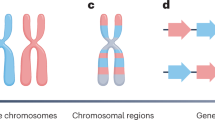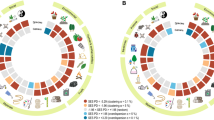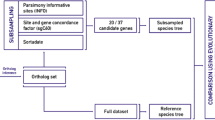Abstract
The prospects of integrating full-blown biological taxonomies into an ontological reasoning framework are reviewed. We contrast the common usage of a static 'snapshot' hierarchy in ontological representations of taxonomy with a more realistic situation that involves dynamic, piece-meal revisions of particular taxonomic groups and requires alignment with relevant preceding perspectives. Taxonomic practice is characterized by a range of phenomena that are orthogonal to the logical semantic background from which ontological entities and relationships originate, and therefore pose special challenges to ontological representation and reasoning. Among these phenomena are: (1) the notion that there is a single phylogenetic hierarchy in nature which taxonomy can only gradually approximate; (2) the evolvability of taxa which means that taxon-defining features may be lost in subordinate members or independently gained across multiple sections of the tree of life; (3) the hybrid approach of defining taxa both in reference to properties (intensional) and members (ostensive) which undermines the individual/class dichotomy sustaining conventional ontologies; (4) the idiosyncratic yet inferentially valuable usage of Linnaean ranks; (5) the indelible and semantically complex 250-year legacy of nomenclatural and taxonomic changes that characterizes the current system; (6) the insufficient taxonomic exploration of large portions of the tree of life; and the need to use a sophisticated terminology for aligning taxonomic entities in order to integrate both (7) single and (8) multiple hierarchies. We briefly such how such integration may proceed based on an initial expert alignment of concept relationship and subsequent use of first-order logic algorithms to maximize consistency, reveal implied relationships, and ultimately merge taxonomies. In light of the aforementioned obstacles, we suggest that research along the taxonomy/ontology interface should focus on either strictly nomenclatural entities or specialize in ontology-driven methods for producing alignments between multiple taxonomies. We furthermore suggest that the prospects of developing successful ontologies for taxonomy will largely depend on the ability of the taxonomic expert community to present their phylogenies and classifications in a way that is more compatible with ontological reasoning than concurrent practice. Minimally, this means (1) adopting rigorous standards for linking new core taxonomies to relevant peripheral taxonomies through comprehensive alignments so that their ontological/taxonomic connections are transparent; (2) using lineage-specific ontological standards for phenotype-based accounts of taxa while taking into account the phylogenetic contextuality of phenotypic descriptors; (3) presenting all nomenclatural and taxonomic novelties in an explicit, ontology-compatible format, including intensional and ostensive definitions; and (4) offering comprehensive intensional/ostensive alignments to entities in relevant preceding taxonomies.
Similar content being viewed by others
Article PDF
Author information
Authors and Affiliations
Corresponding author
Rights and permissions
About this article
Cite this article
Franz, N., Thau, D. Biological taxonomy and ontology development: scope and limitations. Nat Prec (2010). https://doi.org/10.1038/npre.2010.4593.1
Received:
Accepted:
Published:
DOI: https://doi.org/10.1038/npre.2010.4593.1
Keywords
This article is cited by
-
Towards a global list of accepted species V. The devil is in the detail
Organisms Diversity & Evolution (2021)



